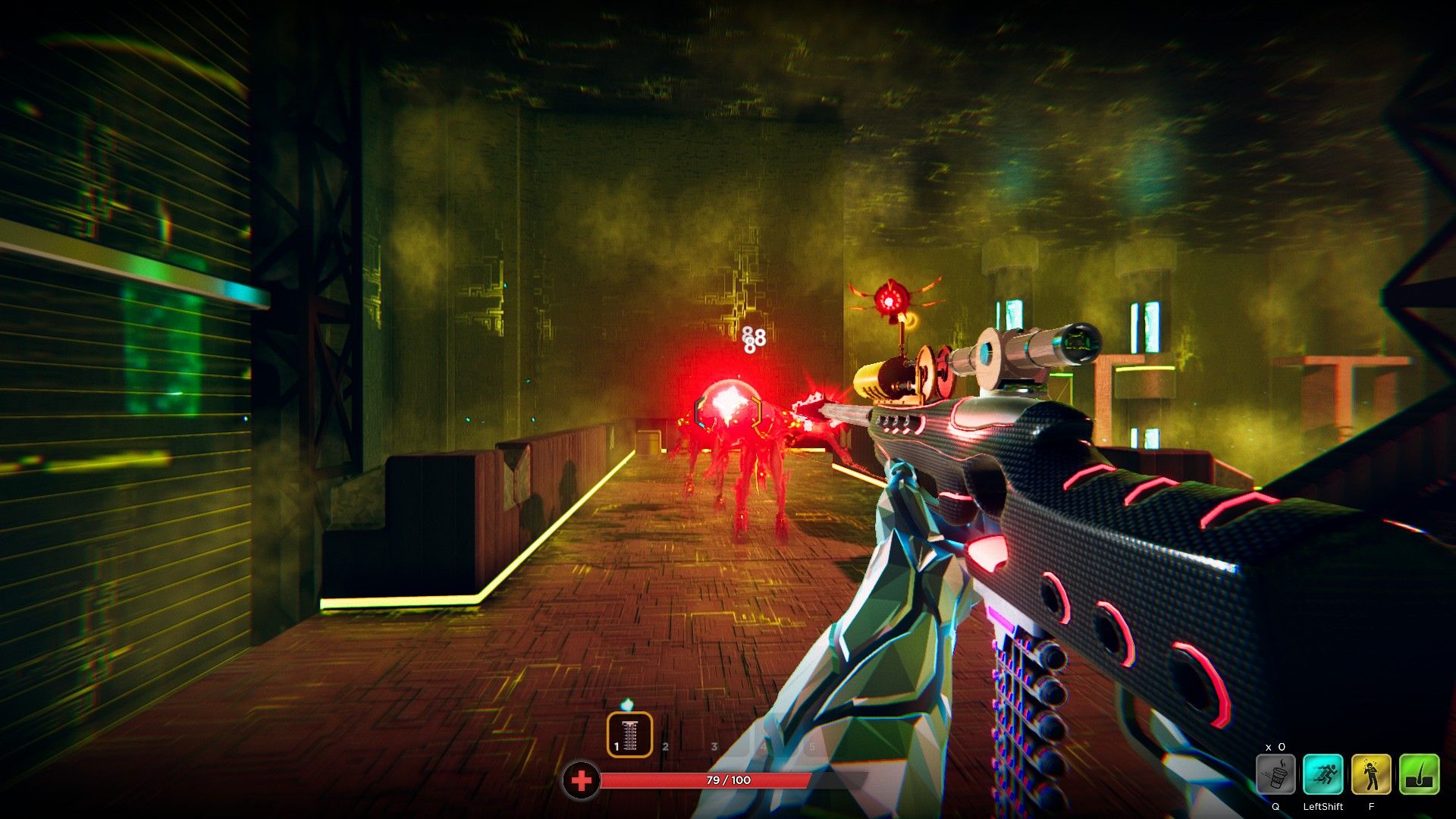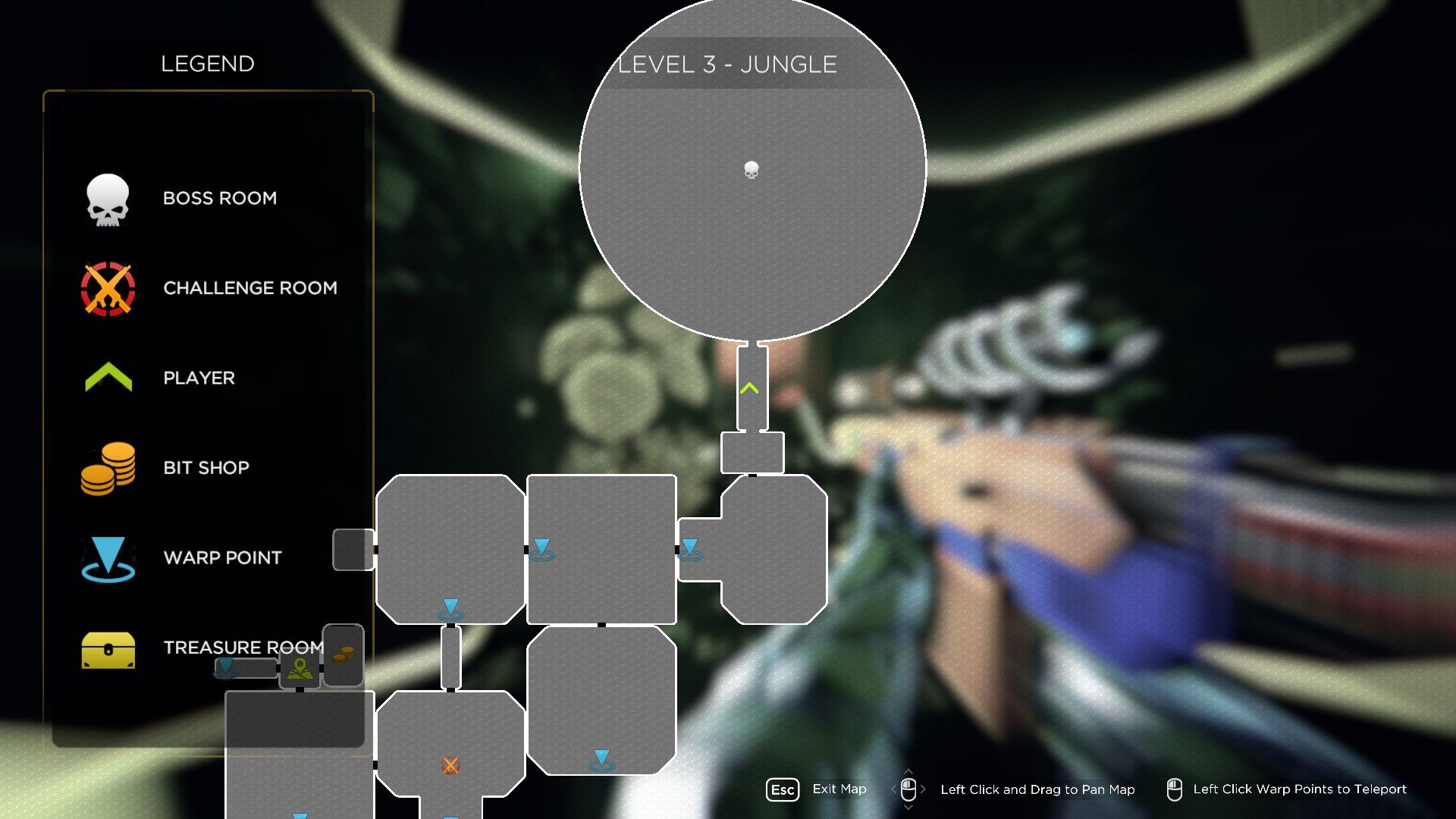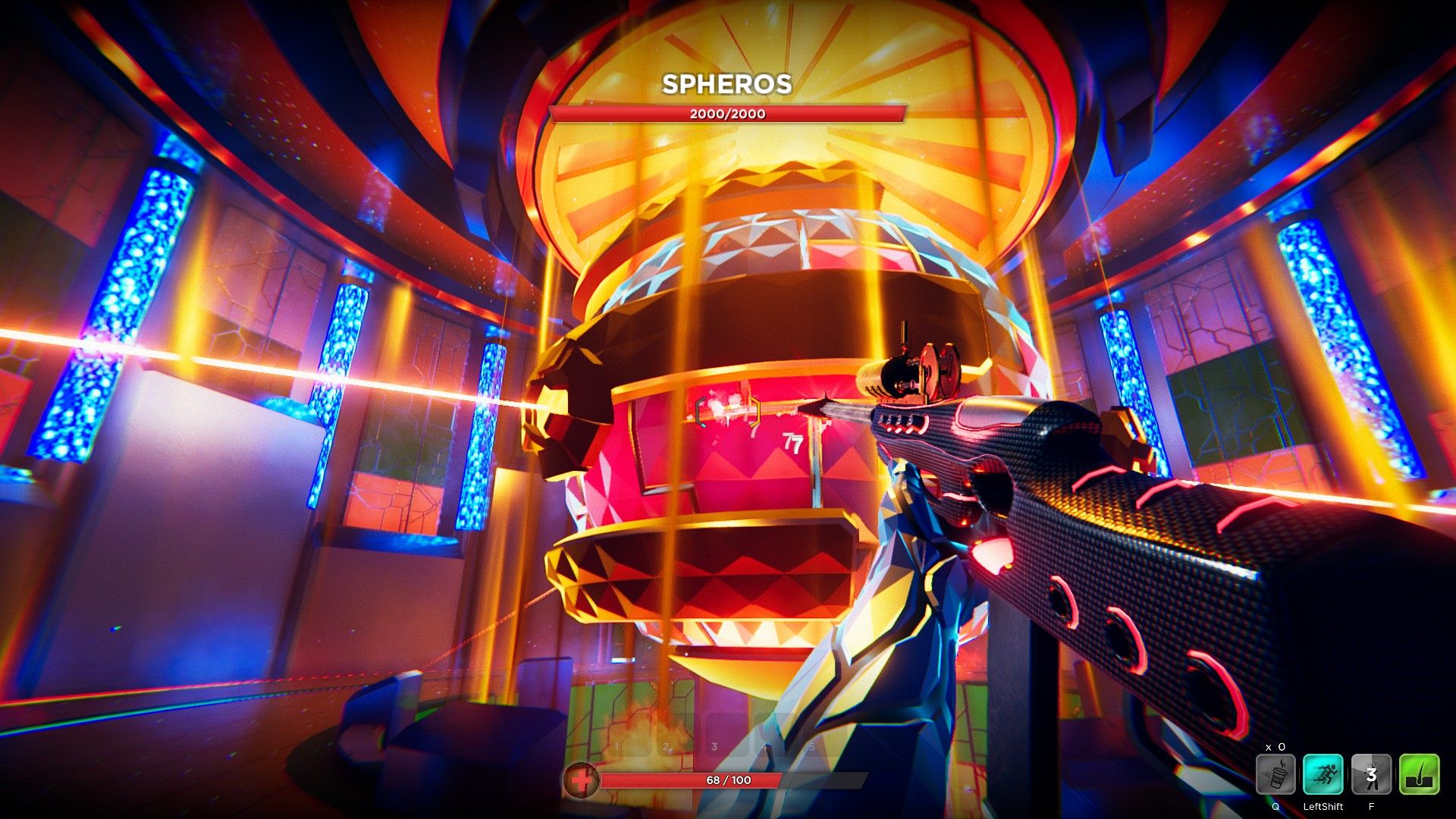https://ift.tt/2Ml9ndM - youtube channel Hypergun Review: Skip the Simulation https://ift.tt/2OYMLOa August 23, 2018 at 08:08AM 
Hypergun is a prosaic roguelite arena shooter, and an FPS that feels like it was built from generic assets. Billed as an unpredictable, procedurally generated experience defined by its collectible weapon modules, of which the game boasts over 150, it all amounts to an exasperating, clumsy slog through identical rooms, with almost nothing to recommend outside of its soundtrack, provided by the magnificent French synthwave musician Carpenter Brut.
You take the role of Dewey Owens, an intern working at DevTech Labs who snuck in over the weekend. DevTech is an advanced weapons corporation dedicated to putting a stop to an unseen alien menace, and has crafted a simulation chamber to determine the ultimate weapon, a so-called "Hypergun," crafted from a multitude of disparate parts, and meant to be thoroughly tested in a kind of virtual reality deathtrap. The bulk of the game consists of running through this simulation, unlocking additional weapon add-ons, and spending the persistent currency "hyper coins" on unlocks which allow additional randomized drops per run.
Related: Death's Gambit Review - A Troubled Deal With Death
For starters, Hypergun's frame story never successfully aligns with the meat of its gameplay. The game boasts the ability to track down "passive aggressive post-it notes," and allows you to interact with a few computers and tablets to read the small handful of inter-office emails at DevTech Labs. None of this ever amounts to much, and it's peppered through what is, frankly, an overly simplistic handful of brightly lit rooms that look like purchased Unity Store assets. There is a palpable feeling that these opportunities for world-building are intended to charm, but they're rarely clever or compelling, with "jokes" that include references to cryptocurrency, frequent pizza deliveries, and development hell. If Hypergun is genuinely trying to build some kind of lore around itself, the attempt is half-baked and neglectful.

The gameplay itself is similarly confused and ungainly, with every single segmented arena per playthrough devoid of memorable character or contrast. Each room locks upon entry, invariably offering a series of ramps and ledges decked out in neon-lit colors and chrome textures, with enemy hordes built of simplistic polygons endlessly rushing your character en masse. Your sole equipped gun gains and loses statistical boosts depending on the pickups you find, which usually add/or subtract percentages to velocity, accuracy (a perplexing stat in a non-RPG FPS), damage, fire rate, and so on. Some also inexplicably increase movement speed or health, and most feature a misfired reference or inane quip; a helium tank (its description reads: "sounds halarious[sic]") adds 7% to your fire rate and subtracts 20% to your velocity, neither of which make any functional sense. Certain pickups add a swappable attachment to change things up, like a cluster bomb launcher, but these operate on individual cooldown timers rather than act as discreet weapons.
It doesn't help that most pickups are unreadable when discovered, which means that grabbing them is a complete dice roll, removing any potential for strategic consideration of which synergies should be sought out — you simply walk over a spinning crate and hope the RNG works out in your favor. Sometimes the damage number sizzling over enemy heads goes up, sometimes it goes down, always in a perfunctory font that reeks of placeholder.

Hypergun seems packed with evidence of placeholders, and it's hard to believe that the in-game map could be representative of the final shipped version, with comparable quality to a PowerPoint wire-frame. And, since almost every room is indistinguishable from another, you'll be tabbing into that map constantly, otherwise unable to gain a sense of place or direction or among the unfurling series of duplicated techno-themed corridors.
Beyond Hypergun's checklist of seemingly thoughtless design points — including flying mobs begging for a non-existent hit-scan weapon, countless enemies getting stuck in walls and corners and running in place, and the utter absence of voices besides repetitively sampled enemy grunts and roars — there's an inexplicable lack of feedback associated with any of the in-game action. You spend your time kiting enemies in circles around a room, occasionally pausing to empty your clip in a bullet-sponge horde, then sprint some more. The game features some of the most notably unsatisfying gunplay in recent memory, regardless of the (scare-quotes) "wacky" weapon modules in use. To make matters worse, any player damage usually results from offscreen enemies, most of whom make barely a sound when they move, and there are never any directional damage indicators on the HUD when hit. In 2018, these last details are practically unforgivable, as they've been mainstays in most any FPS since the dawn of the millennium.

Wether it's a broomstick rifle stock, a non-functional scope, or a rocket launcher that purportedly fires "rocket swords," none of the game's artificially cosmetic variations on weapon parts deliver that bare-minimum requirement of a modern shooter: a gun that feels good to shoot. The expectation that players will spend the dozens of hours necessary to unlock all the mods and avatars is grim, and Hypergun probably needed another few more months in the simulation chamber.
More: Dustwind Review: Summertime Bleakness
Hypergun releases on PC on August 23, 2018. Screen Rant was provided a PC code for review.
from ScreenRant - Feed https://ift.tt/2MrDxgl
via IFTTT
from https://ift.tt/2Lluok2
via IFTTT
No comments:
Post a Comment